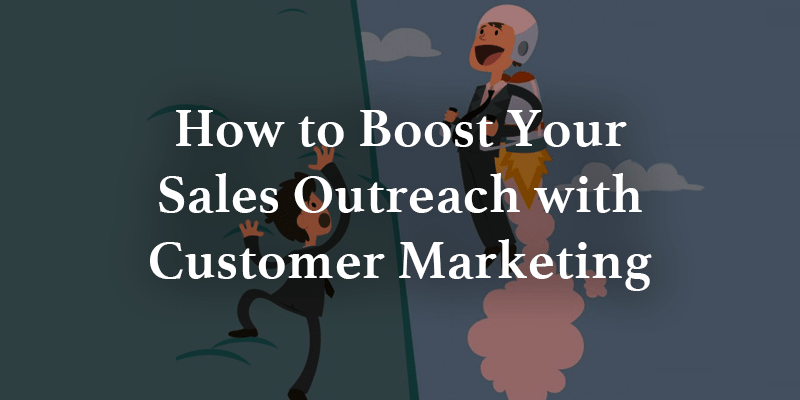This post was co-authored by Will Robins.
A few weeks ago, I posted a message on LinkedIn:
“To all Sales folks: I will be infinitely more likely to respond to your cold email if you offer to introduce me to a successful customer of yours in the initial email.”
The post had more than 160,000 views, 790 likes, and 55 comments. Clearly, I had struck a nerve.
I received a lot of messages that agreed with me. Here’s a handful:
- “A high quality testimonial can produce up to double the open rate on email A/B testing including CTR and calls. :)”
- “You can tailor the outreach to express the value others in the same industry have seen—those insights matter”
- “I completely agree in total transparency as a sales rep and am lucky enough to have a handful of clients who will testify to the value I provide with B2B marketing lists.”
- “I feel like this should be a rule in all of life. ‘We should be friends and here is a close friend who will verify I am an acceptable friend.’ ‘We should date and here is the number of my ex who will state why I was a good relationship choice.’”
But what was most interesting to me was the comments that disagreed or expressed skepticism. I’ll share a few of those here:
- “At most companies sales reps have limited access to their customers.”
- “What we do for other companies could be entirely different [from the] needs for your business.”
- “It takes forever to get a reference.”
- “Customers don’t always want to go public with their opinions.”
- “If you aren’t in a position to invest in a conversation with me up front about your business challenges then quite frankly I wouldn’t waste my time with you.”
Phew! That last one was like a stab in the chest.
And I’ll add: that salesperson needs a wake-up call. Here’s why.
The Buyer Experience
The other day, I arrived at work—after a long commute with the usual slow-down where route 92 intersects the 101 in the San Francisco Bay Area—and I found these emails in my inbox:


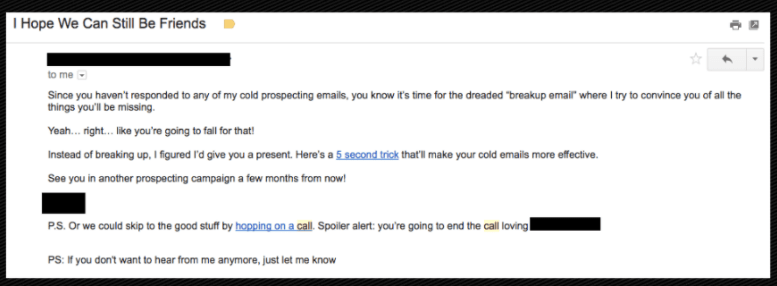
Skimming through these, I found myself on an emotional journey from impatience (“Please get to the point!”), to stress (“I have no time for this”), to sympathy for the salesperson (“Poor AE…”).
Let me reassure you: I love salespeople. I have great respect for what they do. I know what it’s like to pester a non-responsive client. I’ve led Sales teams. One of my first jobs was selling Cutco knives door-to-door (I literally “carried a bag” – full of knives). I have great admiration for salespeople’s perseverance.
In that spirit, I’m also concerned about these 3 salespeople, because their emails aren’t effective. I truly have no idea how these folks can help me and am skeptical that they can—despite assuming that they have the best of intentions.
So on that day, I clicked “Archive,” and ran off to a meeting. I’ve become quite intimate with these two Gmail buttons.
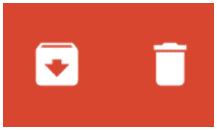
You might say, “Allison, aren’t you worried about missing out? Maybe these reps had a great idea for you!” But I’m not worried. I don’t have FOMO.
Here’s why: I know that if there’s a product that would truly help me, I would have found out about it already through my network. Someone in the industry who I trust—whether it’s a friend, client, acquaintance in a similar role, or investor—would have told me about it.
- We’d be chatting and they would say, “You know, we had a great quarter because we implemented this product and it made a big difference.”
- Or if I had a problem that I needed to get solved, I’d call up a smart friend and ask, “How have you solved this problem?” and they’d tell me, “Check out this product. It really helped us.”
- Or I’d post to LinkedIn and say, “Has anyone encountered a good product for XYZ?”
Although my network might be larger than most, and although I might be more plugged into the tech community than others, I am not alone on the attributes above.
And I’m not alone in this: I trust word of mouth more than any other source when considering whether to buy a product.
The Wake-Up Call
Here are the stark facts:
- Peers and colleagues are the #1 source for gathering information during the discovery stage of a purchase decision (Source: Forrester)
- Referrals have the highest conversion rate from Lead to Deal compared to any other type of lead, and about 4x the rate for sales-generated leads (Source: eMarketer)
Let’s come back to the comment on my LinkedIn post: “If you aren’t in a position to invest in a conversation with me up front about your business challenges then quite frankly I wouldn’t waste my time with you.”
I hear what you’re saying—you’re trying to qualify out prospects and focus your time on the best opportunities. But here’s the thing: I probably meet all your qualification criteria. I have pain points, I have budget, I have decision-making authority. But you’re not going to progress me along your pipeline by asking for a call. You’ll progress me along your pipeline if you help me get exposed to “word of mouth” about your product.
Wake-up call #1: Prospects want to talk to customers more than salespeople.
Wake-up call #2: Prospects have all the power these days. Prospects have the ability to demand a customer call, otherwise they won’t talk to you. Salespeople who decline to fulfill that request are giving up real opportunities.
It’s time for a shift in how we sell.
The Shift
Now that we’re all “awake,” let’s come back to the other comments on the LinkedIn post. These concerns are all about how hard it is to introduce a customer to a prospect.
- “At most companies sales reps have limited access to their customers.”
- “What we do for other companies could be entirely different [from the] needs for your business.”
- “It takes forever to get a reference.”
- “Customers don’t always want to go public with their opinions.”
All of these are fixable problems. They are tactical issues with tactical solutions:
- “At most companies sales reps have limited access to their customers.” → VISIBILITY
- “What we do for other companies could be entirely different [from the] needs for your business.” → MATCHING
- “It takes forever to get a reference.” → AUTOMATION
- “Customers don’t always want to go public with their opinions.” → PIPELINE
Here’s how we solve these problems cross-functionally at Gainsight. Our Customer Marketing team is at the root of this, orchestrating processes across our Sales and Customer Success teams to ensure we’re translating great customer outcomes into new business.
Challenge #1: VISIBILITY → Know Which Customers Are Successful
The worst thing you can do during a sales cycle is introduce an unhappy customer to a prospect. You have to know which customers are successful.
To check if a customer is successful, our Sales team looks up the Health Scorecards for a given client—either within the C360 page in Gainsight or on the Gainsight Sales View that sits within the Account or Opportunity page in Salesforce.
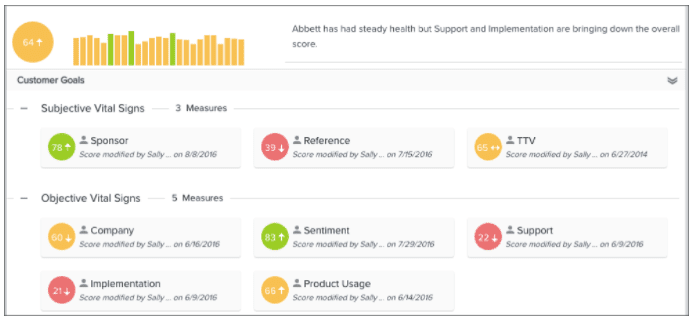
Challenge #2: MATCHING → Match the Right Customer with the Prospect
Our Sales team leverages NameDrop to quickly know which of our customers are similar to the prospect they’re engaged. It’s easily accessible in the Gainsight Sales View, right on the Account and Opportunity pages in Salesforce. It empowers them with knowledge of our customers, even if they have no time to prepare.
NameDrop leverages the data you have on your customers and prospects to identify matches on key attributes, such as industry, geography, or size. AEs can also easily see if the customer is healthy, and if we have the right to share their logo by name.
To uplevel the impact of NameDrop, you can incorporate referenceable contacts and customer collateral (case studies, videos, webinars, etc). So in addition to being able to share the names of similar, healthy customers, you can easily share any collateral you have about them, or the names of willing advocates.
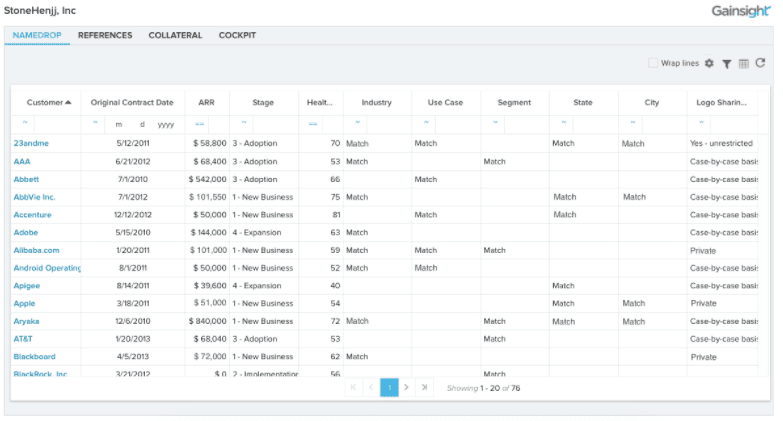
Challenge #3: AUTOMATION → Get a Customer Reference, Quickly
If you don’t have a speedy process for customer reference calls, you’re putting your opportunities at risk. Buyers will lose confidence if it’s a long ordeal to get them connected with a customer.
When we rolled out a Customer Reference Process using Gainsight, we were able to reduce the time to coordinate a reference call from one week to one day. We also greatly increased the quality of references, making sure they were better suited for the prospect’s industry, use case, size, etc. The backbone of this improvement was:
- “Reference Request” Call to Action (CTA): a CTA Layout that asks the Salesperson for the specific pieces of information we need to quickly coordinate a reference.
- Advocacy Dashboard: Shows our customers with a variety of attributes and health scores relevant to a reference manager, so we can quickly search.
- Reference Playbook: Clearly spells out the different steps of the Reference Request process, so there’s clarity on who owned which step of the process.
Reference Request CTA Layout:

Challenge #4: PIPELINE → Mobilize Successful Customers
You’ve got successful customers. But are you converting them into advocates?
A Voice of the Customer (VoC) program is critical to this. Our Customer Marketing team sends Net Promoter Score (NPS) surveys to our customers through Gainsight Surveys, runs a playbook in Gainsight Cockpit for our CSMs to follow up on customers’ responses, and tracks our Promoters to ensure we’re nurturing them and finding the right opportunities to enable them to advocate for Gainsight.
If a customer responds to the question “How likely is it that you would recommend us to a friend or colleague?” with a 9 or a 10, we’ll definitely find ways to take them up on that 🙂
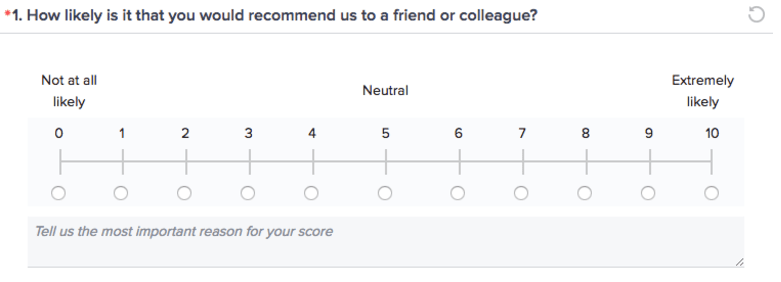
We also track the last time that a given customer gave a reference so that we don’t overwhelm them with requests.
So what now?
If you’d like to get some help assessing your own Customer-Led Selling efforts, we’ll give you an assessment and show you how you can improve.
We’ll even connect you with a Gainsight customer who has done it well 😉
Just shoot me an email at apickens@gainsight.com and we’ll get started.
